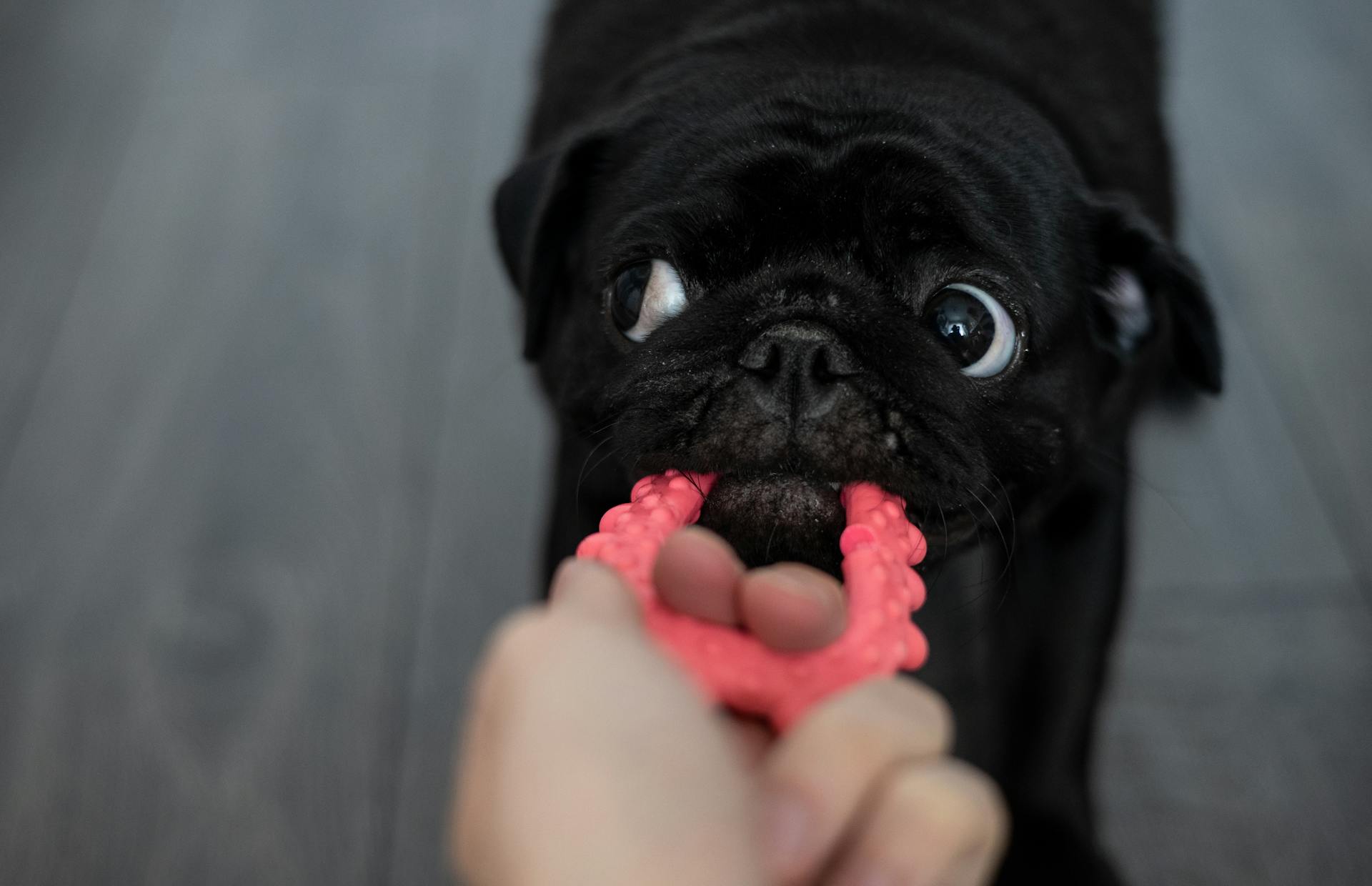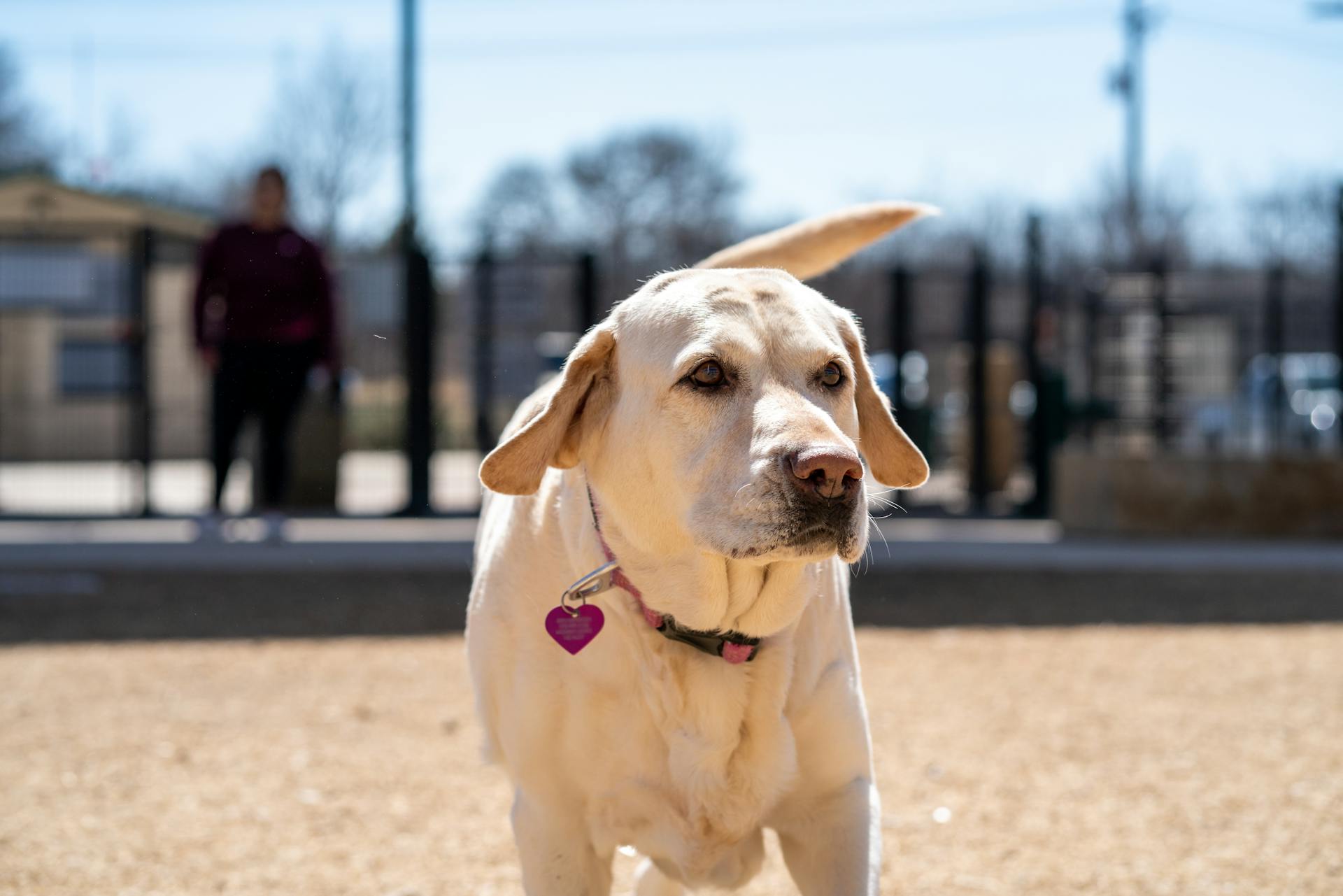
Dogs hump stuffed animals for a variety of reasons, and it's not always about dominance or aggression.
One of the main reasons dogs hump stuffed animals is to mark them with their scent, which is a natural behavior for dogs.
Dogs have scent glands located on their underside, and by rubbing against the stuffed animal, they deposit their scent on it.
This behavior is often seen in puppies, who are still learning about their environment and their place in it.
Dogs may also hump stuffed animals because they find them comforting or soothing, much like a security blanket for a child.
In some cases, dogs may hump stuffed animals because they're bored or looking for attention.
Why Dogs Hump Stuffed Animals
Dogs hump stuffed animals for various reasons, and one of the most common is because they haven't been spayed or neutered.
This means their sexual hormones are driving them to mate, making them more likely to start mounting and humping their toys, including stuffed animals.
Spaying or neutering your dog can help stop this behavior or at least reduce it, although some dogs continue to hump toys even after being fixed.
If your dog is feeling really excited, she may hump the nearest thing she can find, including a stuffed animal, to get out some excitement.
It's likely to happen when she's in a situation that provides a lot of stimulation, like at a dog park or when she's playing with her pal.
Redirecting her energy into something acceptable, like a game of fetch, can help discourage this type of behavior.
Suggestion: What Can You Feed Dogs Other than Dog Food
Understanding Canine Behavior
Dogs hump stuffed animals for a variety of reasons, but most often it's a sign of anxiety or stress. They may also hump as a way to self-soothe, especially in situations that trigger their anxiety, such as visiting the vet.
Dogs can become anxious due to changes in their environment, like a new pet being introduced to the household or changes in their owner's work schedule. This anxiety can cause them to hump as a way to cope with their feelings. I've seen this happen with dogs who have recently moved to a new home or had a new baby arrive.
Some dogs hump because they're bored or lonely, seeking attention from their owners. This can be a problem if the owner reacts strongly to the behavior, as it can reinforce the humping. Giving the dog attention, whether positive or negative, can actually make the behavior worse.
Why Is My Dog?
My dog humps his favorite stuffed animal all the time, and I'm starting to get curious about why. It's not just a random quirk; there are some underlying reasons that might be driving this behavior.
Anxiety and stress are common triggers for humping in dogs. If your dog is feeling anxious, he might find an outlet for his anxiety by humping, especially if it's a familiar object like a stuffed animal.
Stress can come from many sources, including vet visits, changes in schedule, or even just having a stranger in the house. Dogs may hump to relieve stress, and it's not uncommon for them to do so in situations that trigger anxiety.
Humping can also be a self-soothing behavior for dogs who are overstimulated. If your dog is getting too excited or overwhelmed, he might resort to humping as a way to calm down.
In some cases, humping can be a sign of boredom or loneliness. If your dog is not getting enough attention or stimulation, she might start humping toys to get your attention.
Spaying or neutering can help reduce humping behavior in dogs, especially if it's driven by sexual hormones. However, some dogs may continue to hump even after being fixed.
It's essential to address humping behavior if it's becoming a compulsive habit or interfering with your dog's daily life. In some cases, it could be a sign of an underlying medical issue, such as a urinary tract infection or skin problem.
What's in Dogs?
Dogs exhibit a common behavior called humping, also known as mounting or mating behavior.
Dog humping can occur against a person, another dog, an object, or even the air.
Some dogs will mount a person's leg or the side of furniture.
This behavior usually involves the dog thrusting their hips against the target.
Mounting another animal typically involves the dog mounting the back end of the other animal.
You might enjoy: How to Stop a Male Dog from Mounting Other Dogs
Addressing the Behavior
Desensitizing your dog to stressful situations can help reduce anxious humping behaviors. For example, if visiting the vet triggers humping, frequent visits just to say hello and get a treat can help associate the situation with happy thoughts.
A stressful situation can trigger anxious humping, so identifying and addressing the root cause is key.
Check this out: Boarding an Anxious Dog
Age and Development
Dogs start exhibiting humping behaviors at a surprisingly early age. Puppies as young as a few months old can start practicing these behaviors with their mom and littermates.
Humping and mounting behaviors are a normal part of a puppy's development, and they're not necessarily related to sex. They're just a way for puppies to test out and learn important social skills.
As your dog grows and matures, you may notice these behaviors continue or even intensify. This can happen as early as 6 months old, when your dog reaches sexual maturity.
At around 6-18 months old, your dog may start humping stuffed animals due to hormonal changes. This is considered a normal part of development, and it's not a cause for concern.
Readers also liked: When Do Male Dogs Start Humping
Sources
- https://www.akc.org/expert-advice/training/why-is-my-dog-humping-or-mounting/
- https://www.preventivevet.com/dogs/how-to-stop-dog-humping
- https://www.thesprucepets.com/why-do-dogs-hump-1118299
- https://www.whole-dog-journal.com/training/why-do-dogs-hump-and-what-your-can-do/
- https://www.cuteness.com/blog/content/is-it-normal-for-dogs-to-hump-stuffed-animals
Featured Images: pexels.com


